The Toleman Formula 1 team was founded in 1981 by Ted Toleman, who died yesterday, deserves its place in the sport’s history despite its relatively brief existence and limited success.
In its short lifespan, Toleman contested just 57 grands prix. It never won a world championship. It never won a grand prix. It only contested three full seasons.But Toleman was the starting point for many successful careers, of both drivers and team staff. And the team Ted Toleman founded went on to enjoy enormous success under different owners, and is one of just 10 still competing in F1 today.
Toleman’s grandfather founded the automotive group which was named after the family in 1926. Under Ted Toleman it expanded into motor racing, first in saloon cars and junior single-seater series. But his ambitions grew, and when considering an expansion into Formula 3 Toleman decided the sensible step would be to aim one rung higher on the ladder.
Formula 2
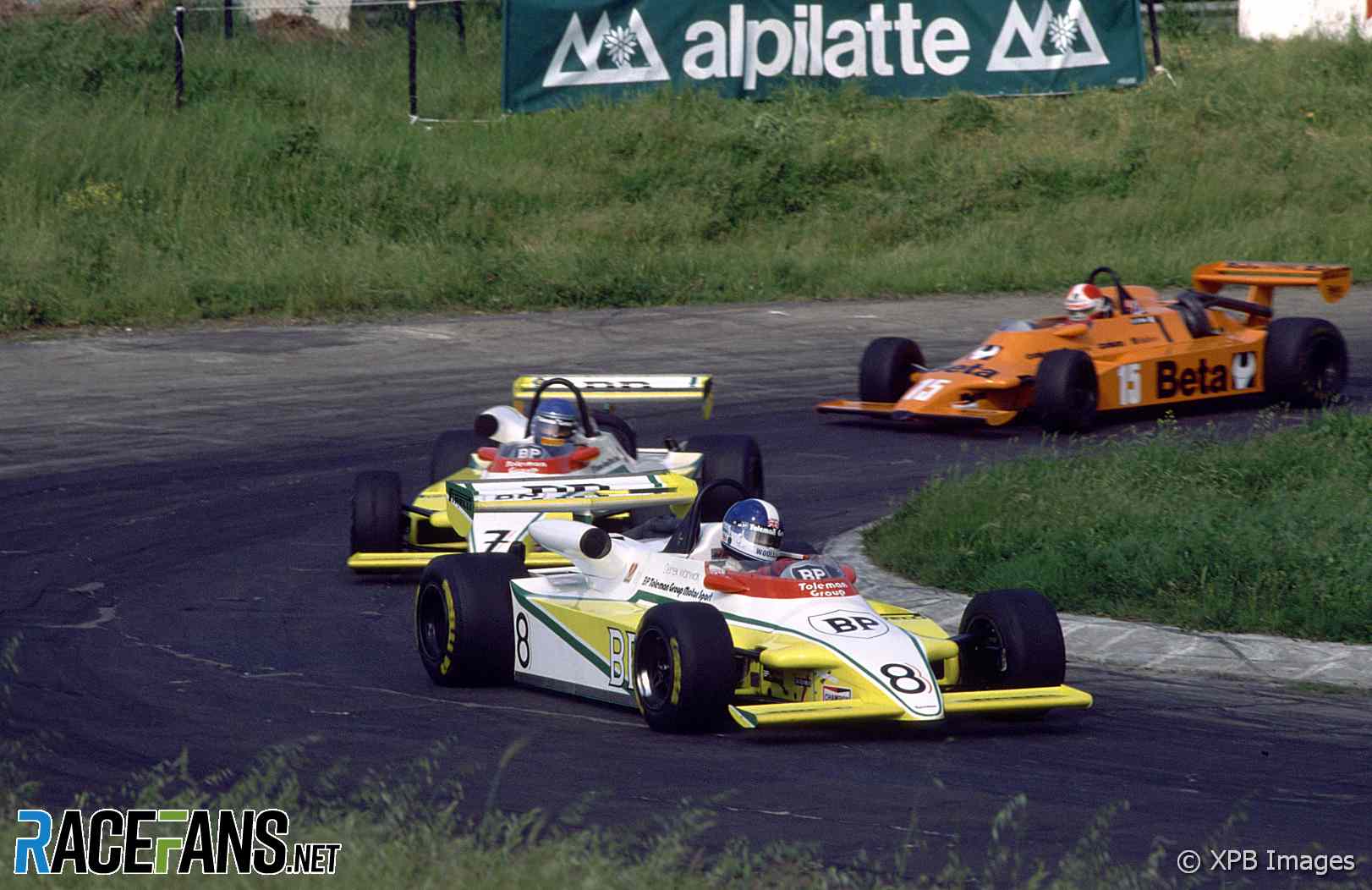
Toleman enjoyed immediate success on its arrival in Formula 2, Rad Dougall taking the team’s March 782 chassis to the podium at Thruxton in 1978. This proved a false dawn: Toleman’s crew had little experience of racing on the mainland European circuits which made up most of the F2 calendar, and he only scored one more point all season.
But Dougall’s victory at Thruxton the following year, in a March fettled by upcoming young designer Rory Byrne, showed the team was serious. His team mate Brian Henton came close to winning the championship in their second season, losing out after the FIA rejected the team’s post-season appeal over their disqualification from the Enna round.
Henton captured the title the following year, backed up by team mate Derek Warwick in second place. Off the back of that success, Toleman looked to quickly make the next step up, bringing both their F2 drivers with them.
1981
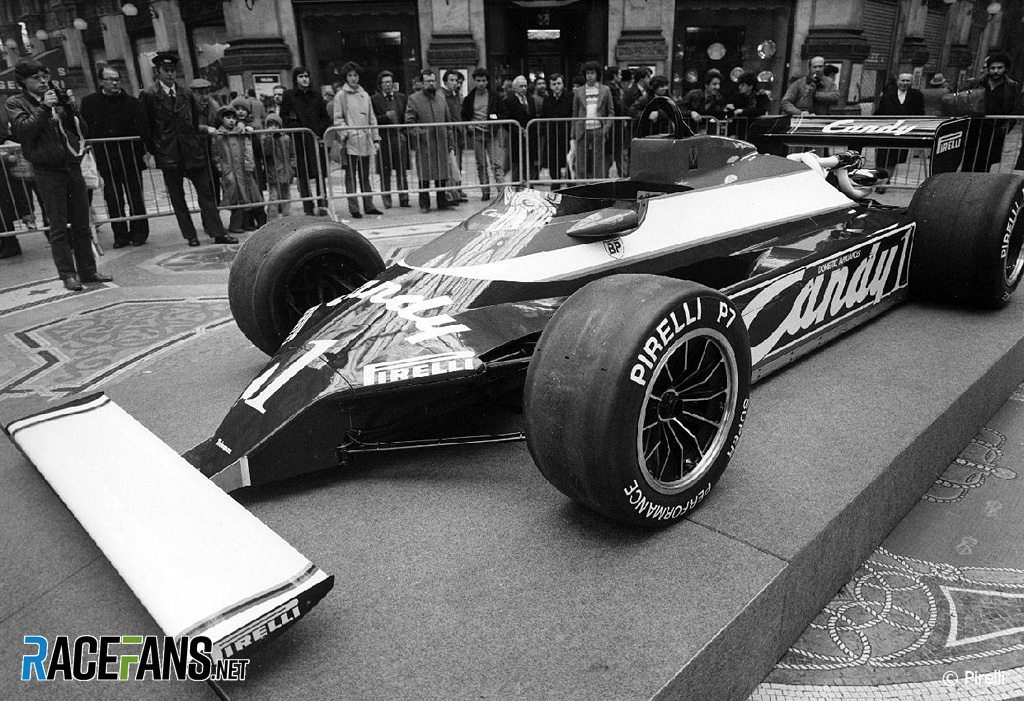
As Toleman prepared to make the leap up to F1 it expanded its roster of staff. One notable hiring who would go on to enjoy great success with the team was Pat Symonds, who assisted with the research and development of Byrne’s first F1 car, the TG181.
Toleman took the bold decision not to follow the popular route of using normally aspirated Cosworth DFV power in for its first design but instead enlisted Brian Hart, who they worked with in Formula 2, to produce a 1.5-litre turbocharged engine. They had taken note of the potency of the turbo engine Renault introduced to F1 in 1977, and while many of their rivals were slow to adopt the format, Toleman gambled on it.
At first the gamble didn’t pay off. The TG181 was significantly overweight, to the point it was dubbed the ‘Flying Pig’. Hart’s early motors suffered the typical problems of early turbos: Delivering all its power at once, some time after the driver opened the throttle.
These shortcoming combined with the inevitable unreliability problems made Toleman something of a laughing stock at first. Having missed the first three rounds, Toleman finally turned up at Imola, home of sponsor Candy, but after leaving the pits for the first time Warwick’s car caught fire before it reached Tamburello, the first corner.
With more cars present than there were places on the grid, neither Toleman qualified on the team’s debut, their best effort over four seconds too slow for the back row. It took until their tenth appearance for Henton to get the car on the grid, and he brought it home in tenth place, though back then points only went to the top six. Warwick achieved the team’s only other starting position, lasting 43 laps in the season finale at Las Vegas until his gearbox broke.
Advert | Become a RaceFans supporter and
1982
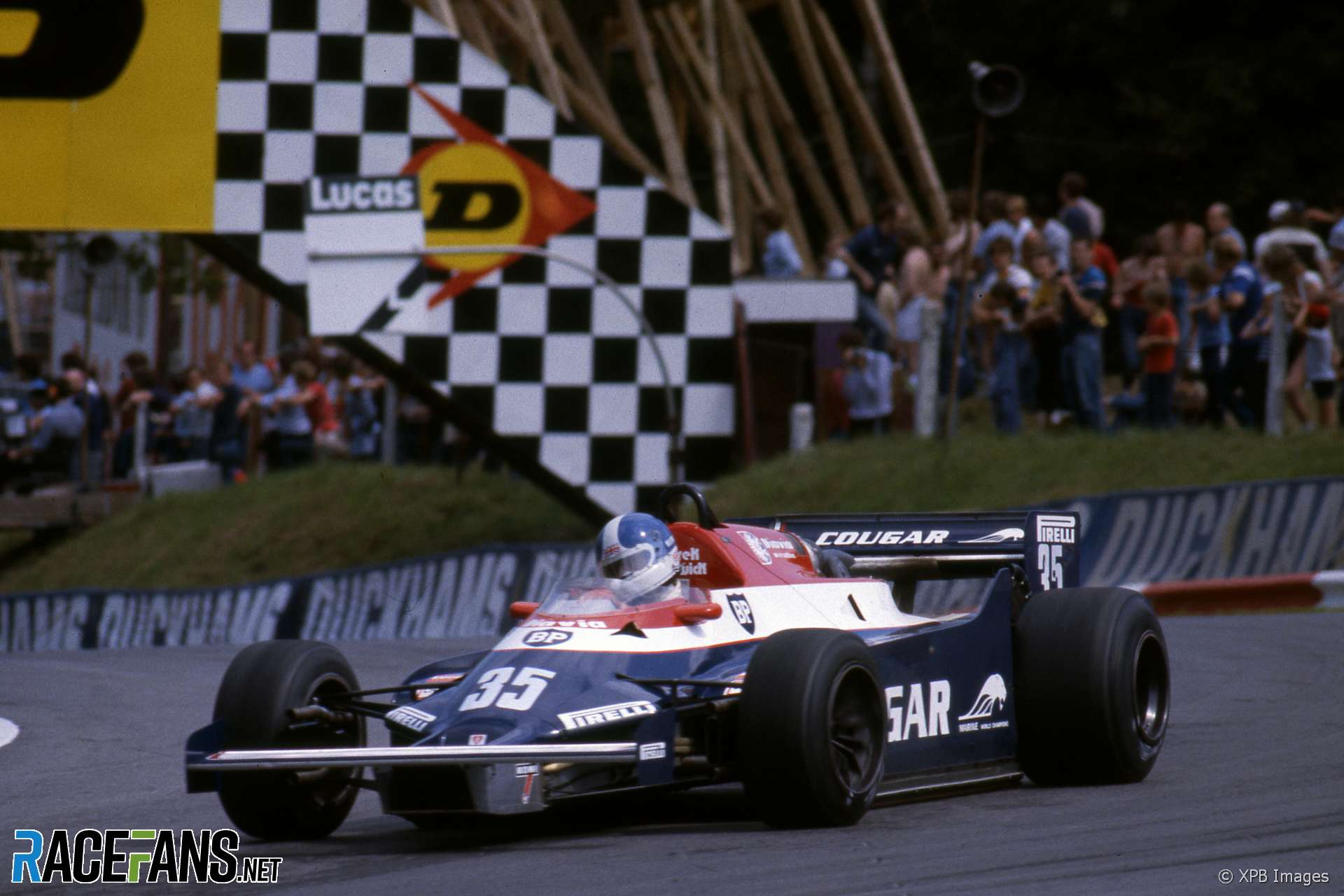
Toleman struggled to shake off their reputation as ‘tail-end Charlies’ at the beginning of their second season. Byrne produced an updated C-spec version of the TG181 but after Warwick qualified for the season-opener neither car appeared on the grid again until round four at Imola, where most of their rivals stayed away due to a row between the organisers.
But the team plugged away doggedly and gradually found greater pace and reliability. So much so that Warwick led 16 glorious laps of their home race at Brands Hatch before retiring, though many suspected the only reason he held the lead so long was that the car was underfuelled.
Nonetheless at the final two races Warwick debuted their latest design, the TG183, which proved a genuine step forwards. “It was much better,” he told RaceFans in 2020. “Different monocoque, much stiffer. The Hart engine got better and better.”
Back at Vegas for the final race, Warwick qualified tenth, their best starting position yet on a full grid. An ignition fault ruined his race, but it was clear better days lay ahead.
Advert | Become a RaceFans supporter and
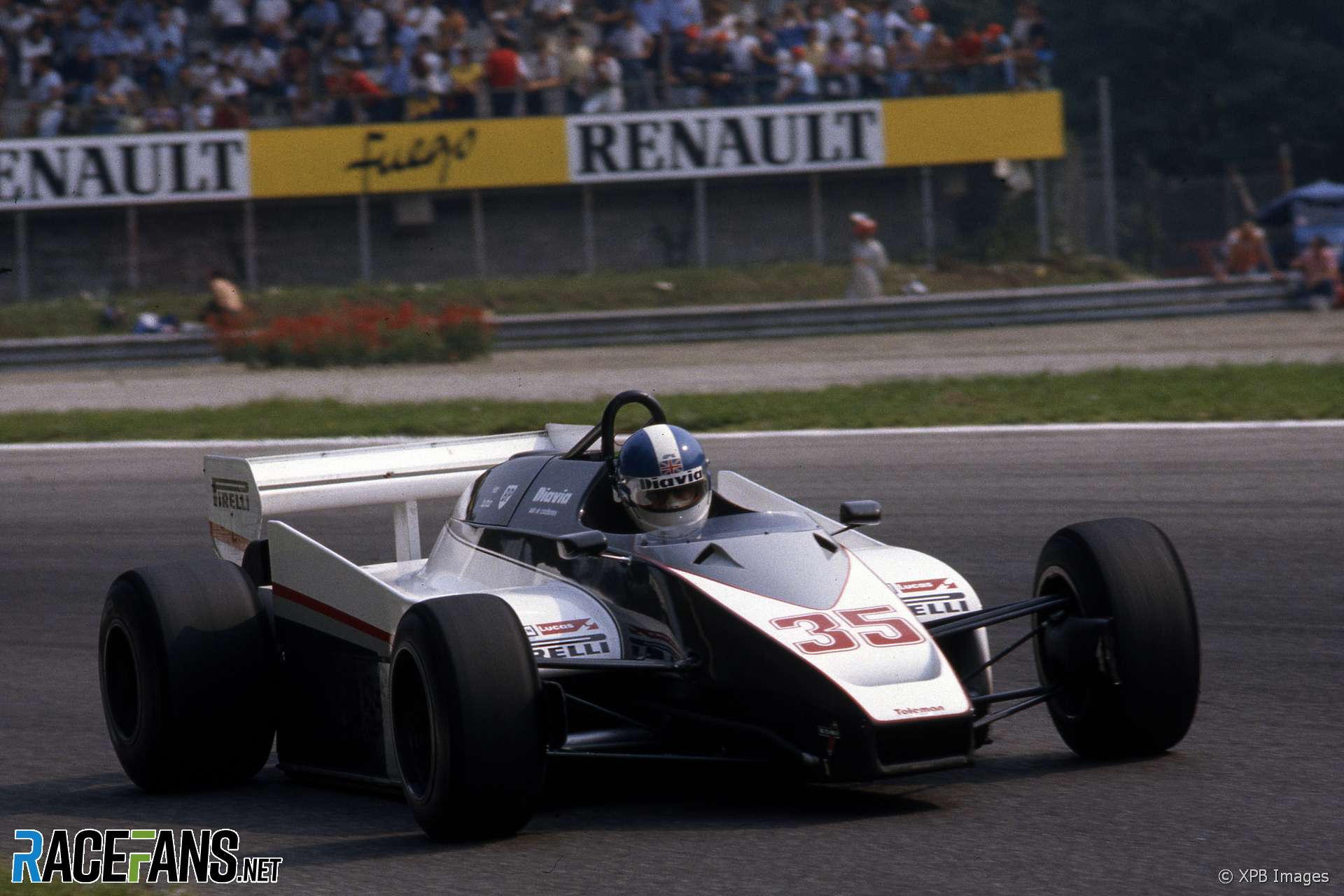
1983
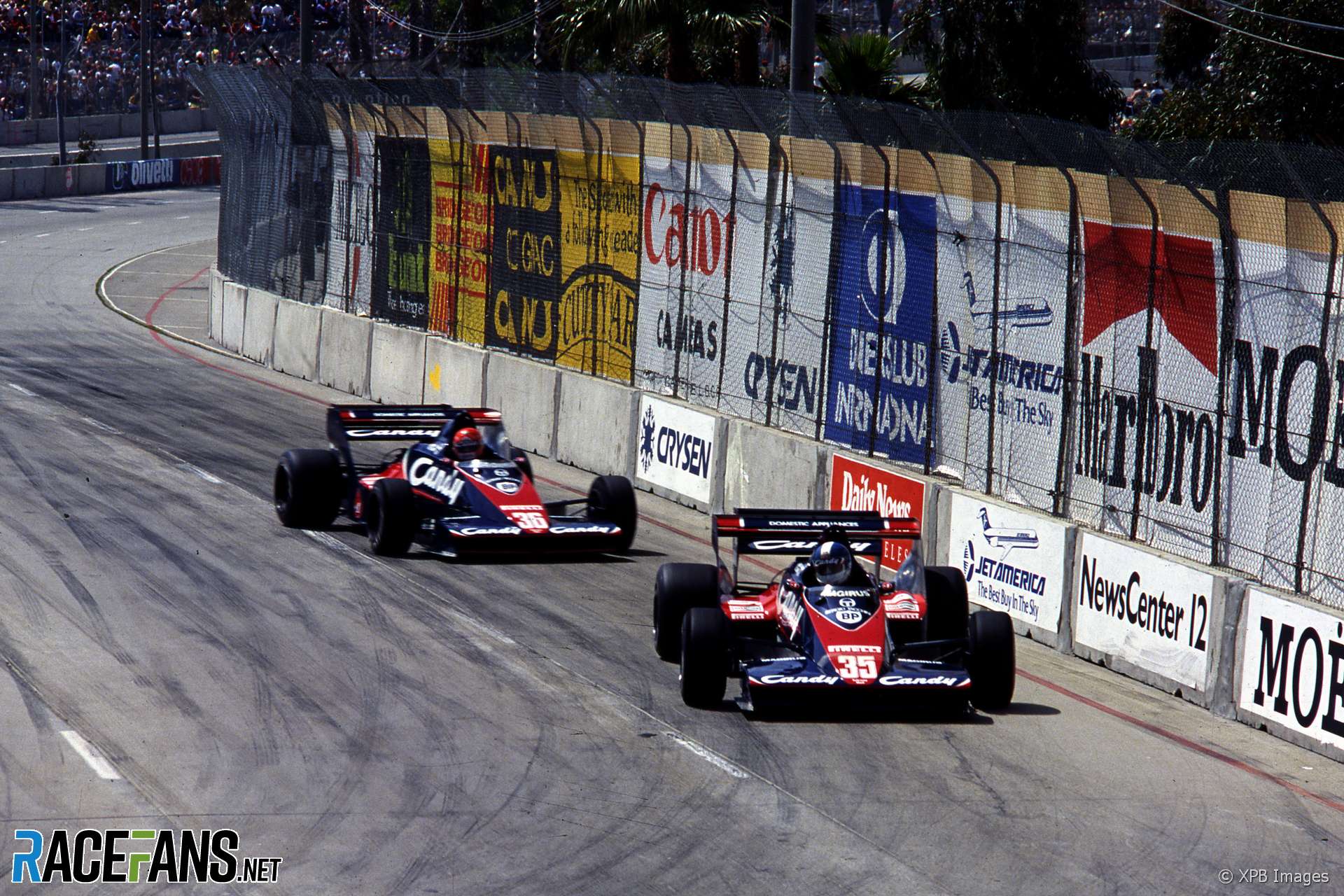
Five different cars filled the top five place on the grid for the opening race of 1983: The Williams of world champion Keke Rosberg followed by a Renault, a Ferrari, a Brabham – and Warwick’s Toleman-Hart TG183B.
But despite this promising start, it took until the 12th round of 16 for Warwick to finally deliver the team’s first point. From that moment on, however, their fortunes were transformed.
Warwick took points in each of the remaining races. In the penultimate round, on home ground at Brands Hatch, he took fifth ahead of team mate Bruno Giacomelli, securing Toleman’s first double points finish.
They ended the year ninth in the standings, two points separating from past champions Tyrrell and Lotus ahead. Any incoming driver seeking an upcoming team to ply his trade at would have been smart to identify Toleman’s potential.
The team was in need of a new driver, too. Renault had spotted Warwick’s potential and tapped him to replace Alain Prost. In his place, Toleman appointed the driver who would become one of the greatest in F1 history, who almost took them to a shock win.
Advert | Become a RaceFans supporter and

1984
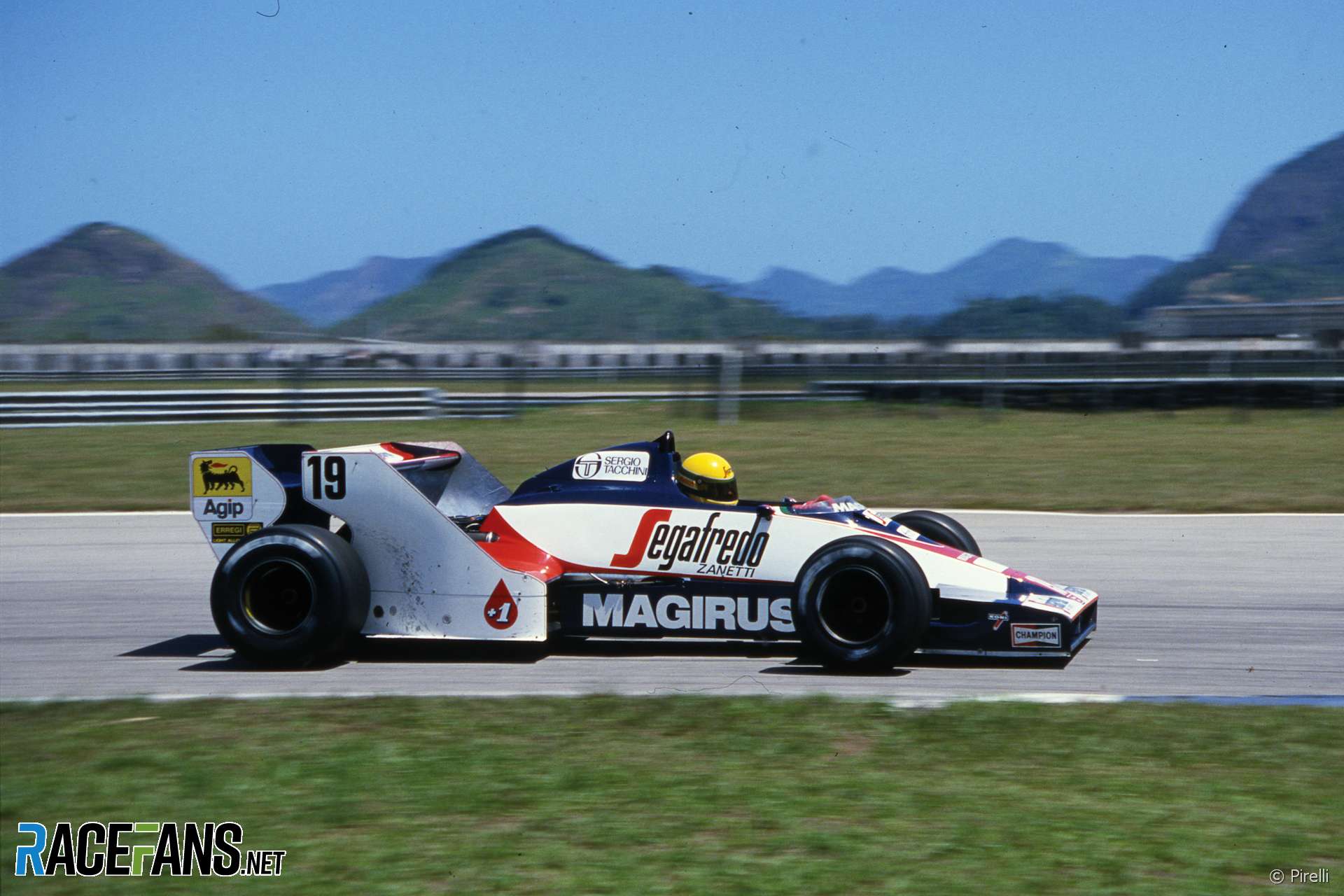
Ayrton Senna made his Formula 1 debut with Toleman at his home race in 1984, the year after winning the British Formula 3 championship. Famously, he had already tested for Williams, Brabham and McLaren but found them unwilling to accept his preference not to wait before getting a race seat.
Toleman appointed him alongside Johnny Cecotto in an all-new line-up. Senna was the first driver to retire in his first race, the turbo in his TG183B failing eight laps in. But in round two at Kyalami in South Africa he brought the car home sixth for a point, albeit three laps down, a result he repeated in the next round at Zolder in Belgium. The new TG184 let him down at Dijon, where the team also switched to Michelin tyres having split from Pirelli, unhappy over their failure to qualify at Imola.Senna’s drive in the 1984 Monaco Grand Prix, run in appalling conditions, immediately became the stuff of legend. From 13th on the grid he patiently worked his way forwards as others dropped out, and as the conditions worsened he began to cut seconds out of race leader Prost’s advantage.
Eventually, with Senna and Tyrrell’s Stefan Bellof closing on the race leader, the red flag was thrown. The race was not restarted, leaving Senna and Toleman fuming over their lost shot at victory.
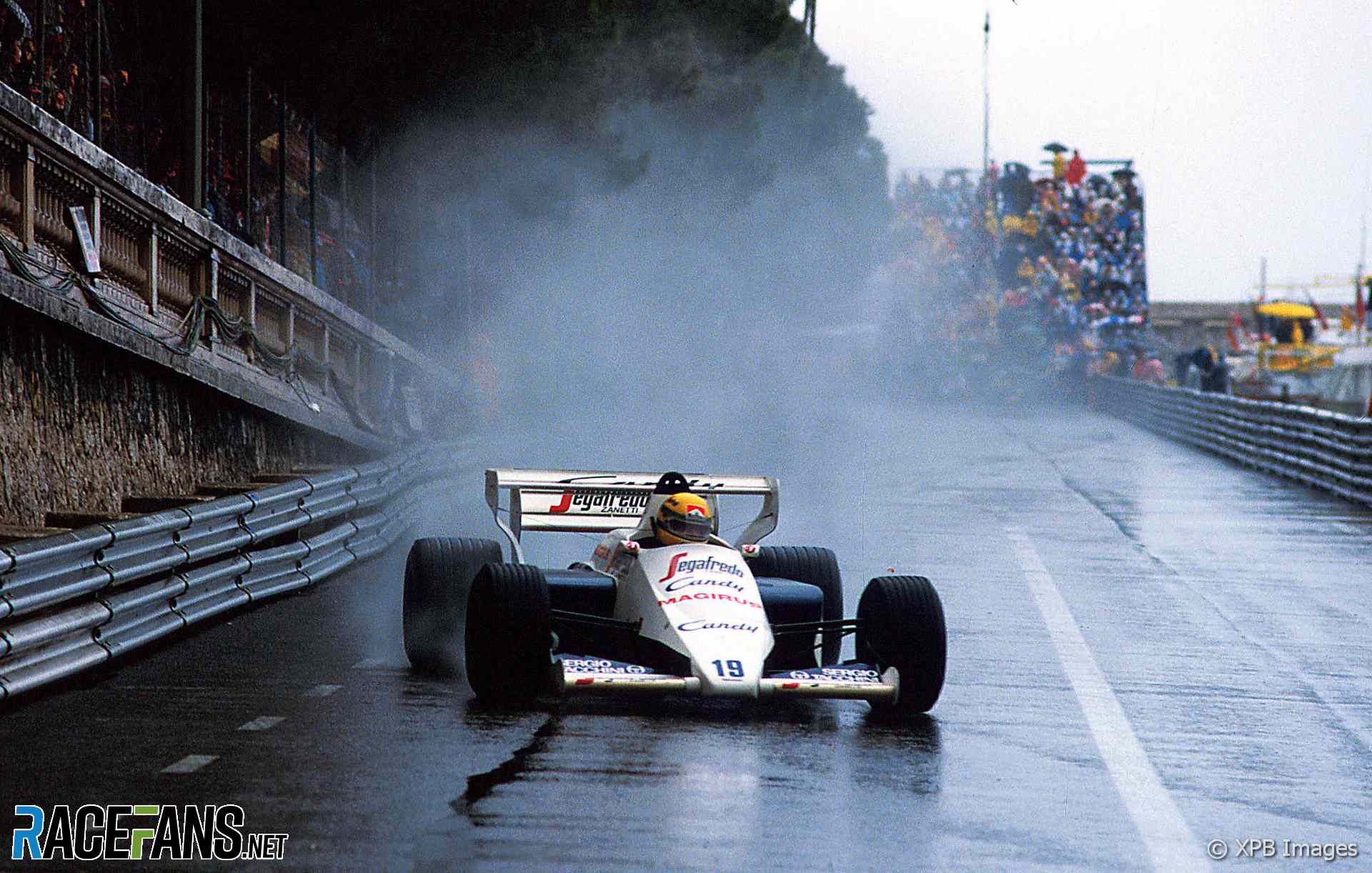
Later in the season Senna infuriated the team by signing to join Lotus the following year. Toleman team principal Alex Hawkridge took the extraordinary step of benching the driver for a race, fielding Pierluigi Martini instead. By now Stefan Johansson was driving the other car, Cecotto having injured his legs at Brands Hatch.
Senna returned for the final races and, in his swansong drive for the team, added a third podium finish to those he’d scored in Monaco and Britain. Toleman achieved their best constructors championship finished with seventh.
Advert | Become a RaceFans supporter and
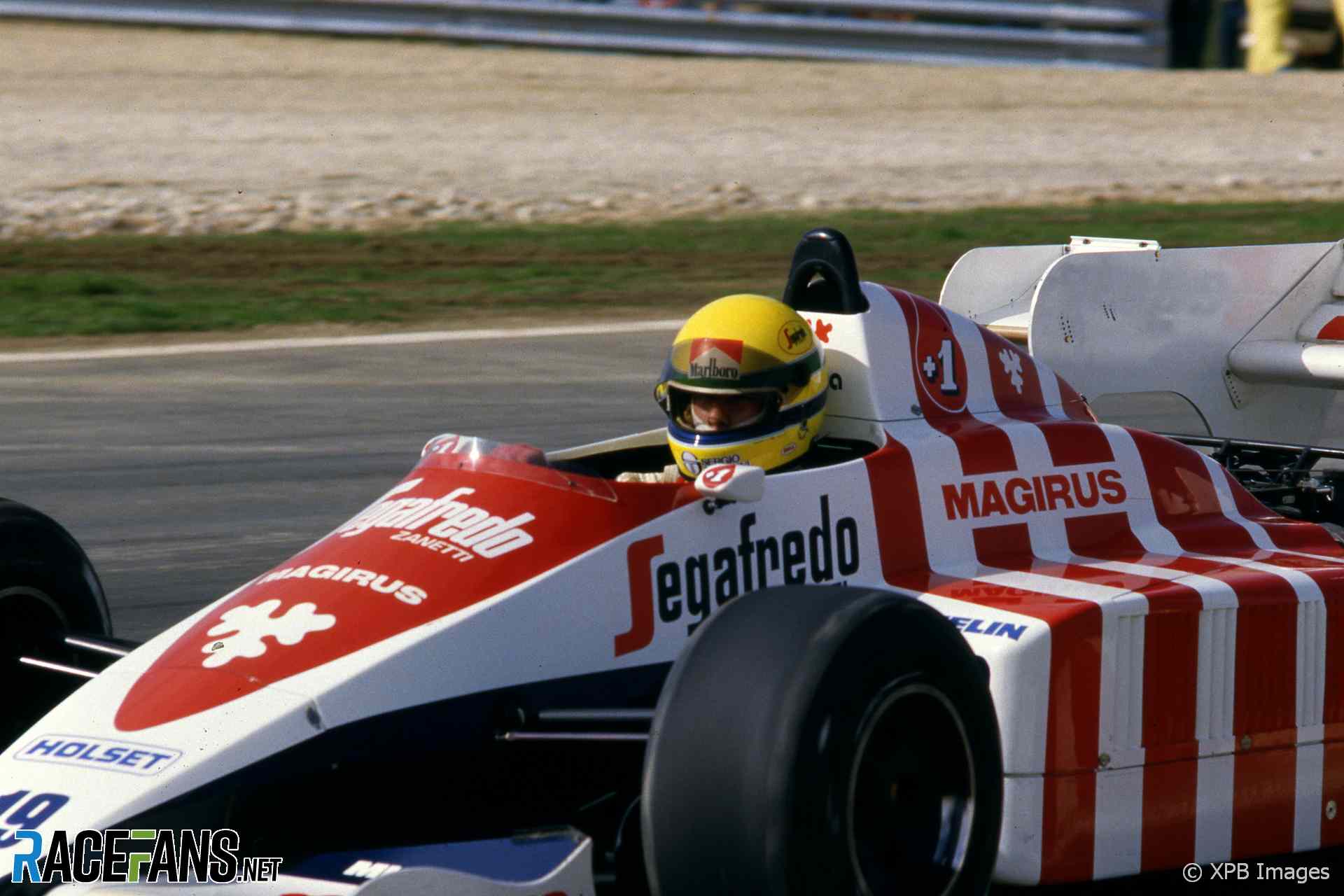
1985
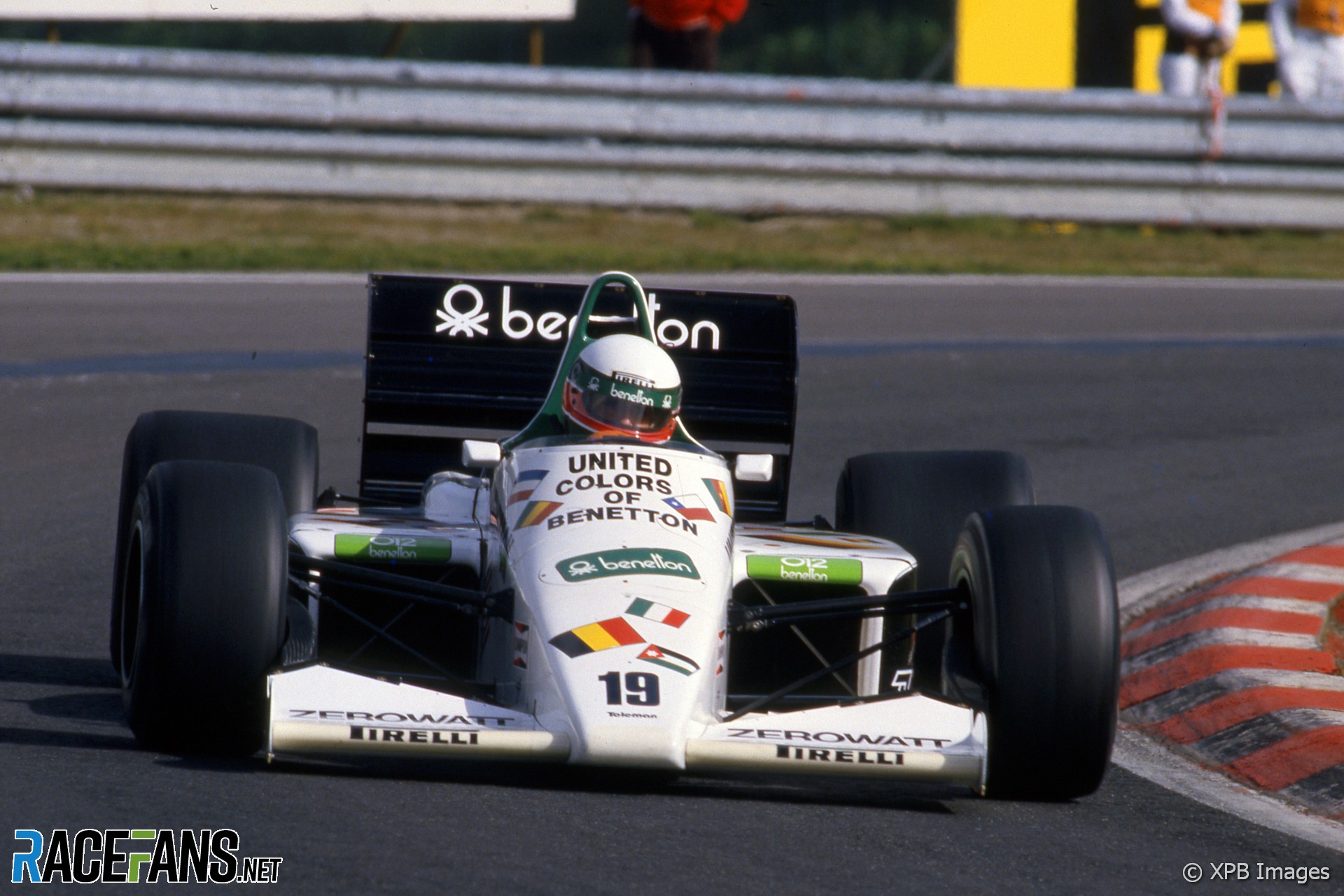
The mid-season split from Pirelli came back to bite Toleman at the start of 1985. Michelin chose to leave F1 and Goodyear were unwilling to supply a further team. With Pirelli not prepared to help out Toleman, they had no tyres to race on, and with that struggled to attract sponsorship.
Toleman had met Luciano Benetton, head of the sportswear company which sponsored Alfa Romeo and, previously, Tyrrell. He agreed to sell the team providing all its staff – numbering little more than 60 – were retained.
The team eventually managed to procure tyres for one car by buying the Spirit team’s contract with Pirelli, which allowed them to run one car for Fabi from the fourth round at Monaco. There was no repeat of their 1984 heroics in the dry race, however. Fabi scraped onto the 20-car grid by a tenth of a second but lasted 16 laps before the turbo failed.
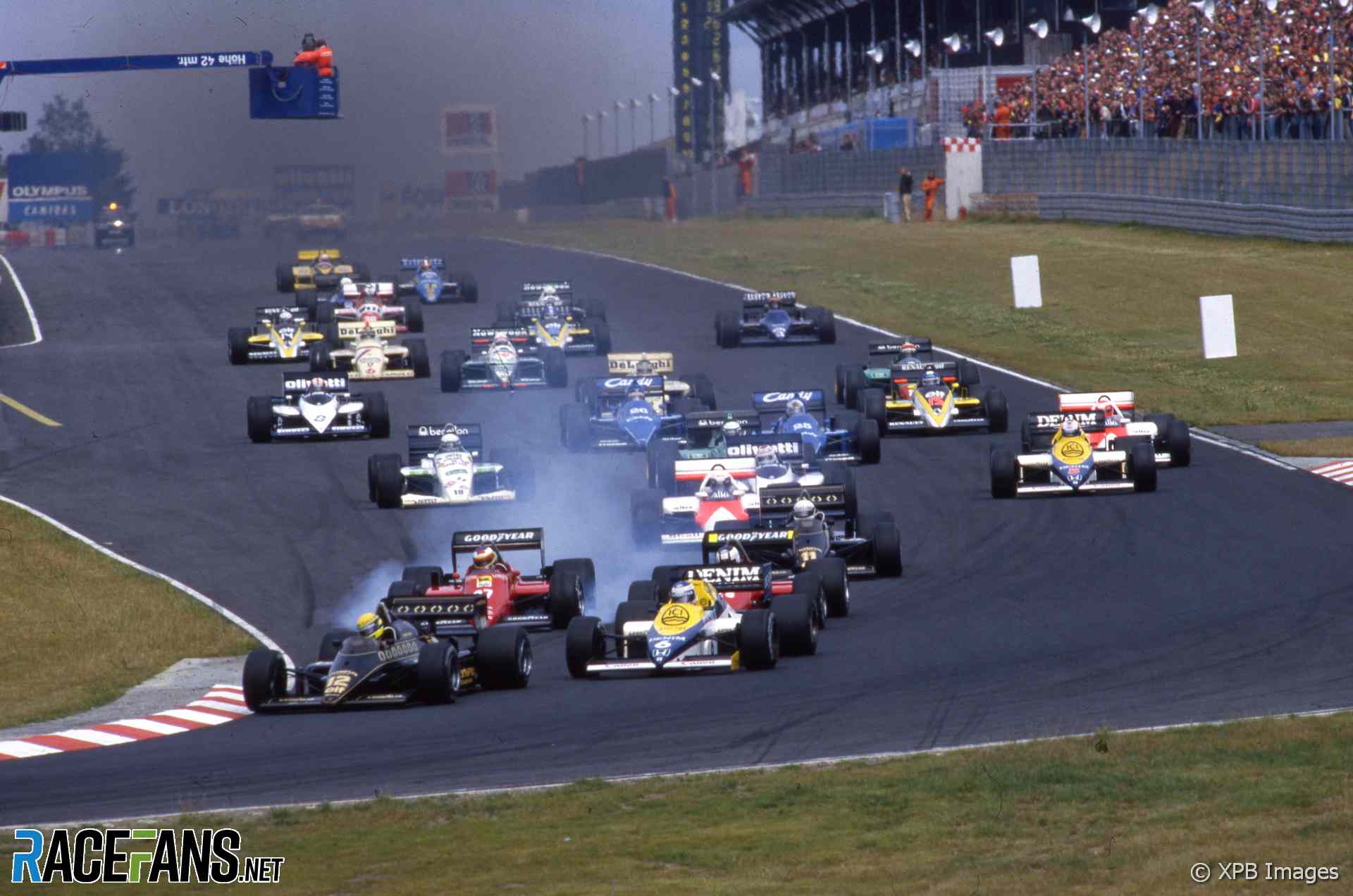
That was a theme of Toleman’s final season. Fabi believed Byrne’s TG185 chassis had enormous potential and put the car on pole position at the Nurburgring by seven-tenths of a second. But a dreadful start saw him fall to eighth and he later retired with a broken clutch. The team ended its final season point-less.
Toleman was rebranded as Benetton in the off-season, and the following year it delivered its first victory, courtesy of Gerhard Berger at the Autodromo Hermanos Rodriguez in Mexico.
Ted Toleman’s team did not enjoy the success it arguably deserved while it carried his name, but it did in the following years. Benetton went on to win world championships with Michael Schumacher in the nineties. It then became Renault and took Fernando Alonso to his two world championship victories in the mid-noughties.
Now Alpine, it last won a race as recently as 2021. This year it is going through another difficult spell. But whatever the name above the door, the team Ted Toleman founded has always found its way back to the front, and don’t doubt they can do it again.
Advert | Become a RaceFans supporter and
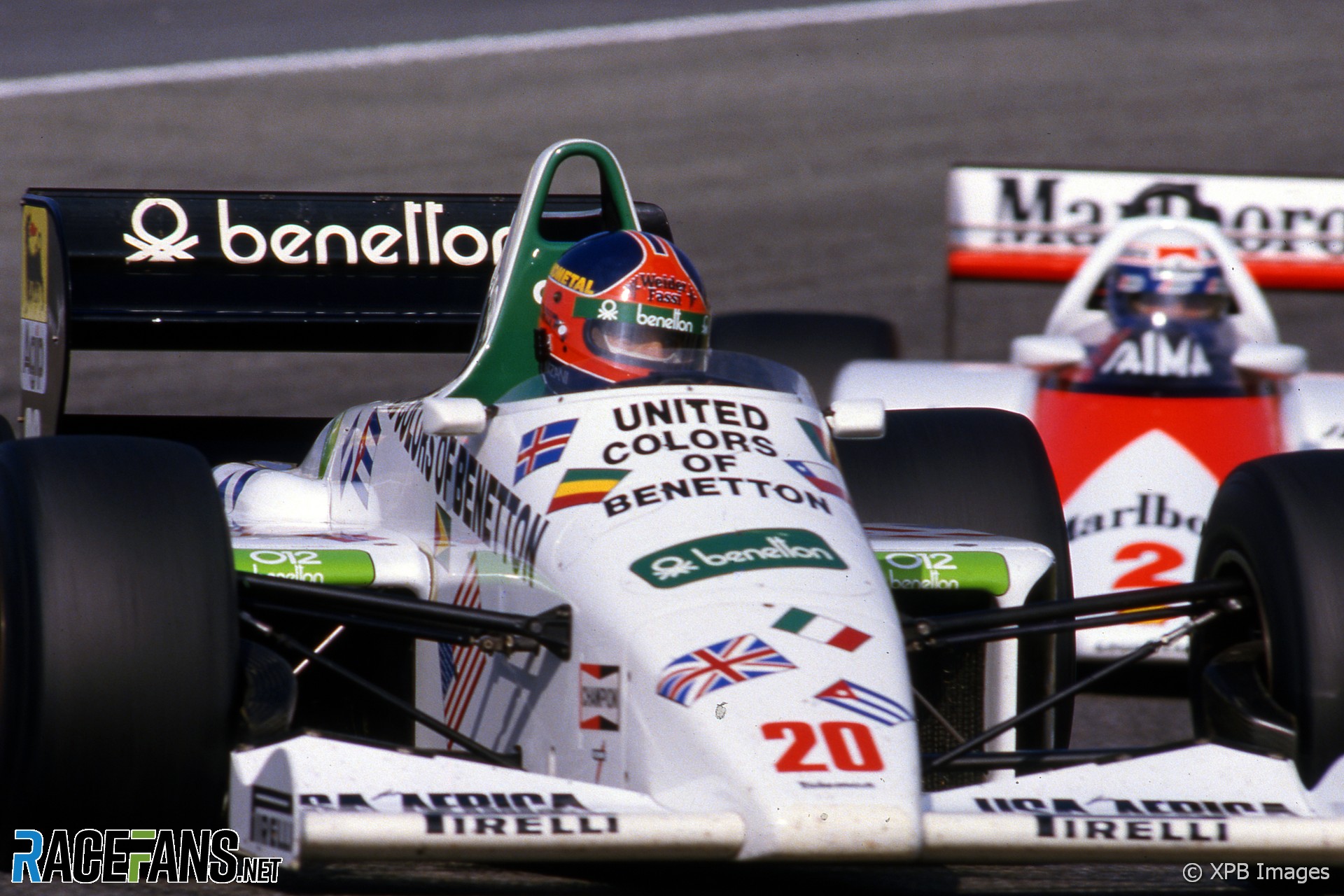
F1 history
- How you rated F1’s 12 sprint races so far – and why two outscored the grand prix
- Alonso set to become F1’s oldest driver for more than 50 years
- From farcical to fantastic: Formula 1’s 14 title-deciding Japanese races ranked
- Benched: The five other drivers who stood down for team mates in last 50 years
- The great go-slows: 10 times F1 drivers threw out the anchor – for different reasons





MarcusAurelius (@marcusaurelius)
11th April 2024, 16:54
That stopped race in Monaco saved Prost the win but lost him the championship. With only half points Prost gained 4.5 points from that race while a 2nd place resulted in 6 points. That 1.5 points difference would have been enough to win over Lauda an the end when only half a point was the difference between them…
I still believe to local organizer wanted a Frenchman to win in Monaco and redflagged the race so Prost would win, but in the end…
Like Keith wrote: Stuff of legends. I was really screaming at the television that day, hoping that unknown Senna would win…
MarcusAurelius (@marcusaurelius)
11th April 2024, 16:54
6 points for a full race that is…
An Sionnach
11th April 2024, 18:08
Or, the conditions were horrendous and the race was deservedly stopped. Of course, due to his damaged suspension, Senna would not have finished a full race. I don’t think Prost has ever regretted this loss as it made sense to stop the race.
This season cements Lauda’s legend as one of those who could find a way to win over the fast young upstart. Prost would do this himself in 1989.
Not Felipe Massa
11th April 2024, 19:44
Where there’s blame, there’s a claim!
Alesici
11th April 2024, 17:03
Nice write up. I learnt a lot.
Weird to see their 1983 car had radiators mounted in the front wing. I’ve never seen such a design. There may be a reason for that.
MacLeod (@macleod)
12th April 2024, 7:50
weight distribution and limited room in the body ….
An Sionnach
11th April 2024, 17:27
Thanks for that. You’ve got to do a lot more these days to score points. Keep it in the road and you’ll end up almost exactly where you started! That said, perhaps someone has gone to the trouble of analysing what percentage of finishers scored points each year? There are four more points paying positions now, so maybe I’m not as right as I think I am?
Alesici
12th April 2024, 15:40
This is a very good idea for an article, hint hint Keith.
Derek Edwards
12th April 2024, 11:57
Piercarlo Ghinzani at the wheel in that final photo as the team expanded to two cars for the last races of 1985.
Tom Baker
12th April 2024, 19:21
We were all delirious watching Delboy scythe through the field at Brands Hatch in ’82, but I fear the delirium is such that it is playing tricks with your memory, Keith, because those 16 glorious laps in the lead never happened, sadly. They were glorious laps in second place.
I think we all know now that the car was light on fuel – in fact hasn’t Delboy openly admitted it in recent years, or is it *my* memory playing tricks now? – but who cares, they were some of the most gobsmackingly “this can’t be happening” moments I have seen in fifty years watching F1. The sight of Warwick nailing onto Pironi through Clearways and along the pit straight and then passing him into Paddock – what, a Toleman passing a Ferrari??!! – was simply exhilarating, however it was achieved, and will live in the memory forever. And on that one, the memory is definitely not playing tricks.